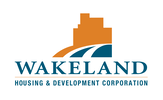A Model NeighborEnvironmental Design + Construction Magazine
July 15, 2010 The Los Vecinos affordable housing complex developed by Wakeland Housing and Development Corp. sets new standards in sustainability and revitalizes its California community. The journey towards this highly efficient development began with the site selection, according to the design and development team. The urban infill project is, by its very location, a practice in recycling. Los Vecinos was develped ont he site of a blighted motel that had been closed due to crime and illicit activities. More than 75 percent of the demolished motel was deterred from landfill with recycling efforts, plus the reuse of the site utilized existing infrastructure. Additionally, the site is in a walkable neighborhood close to public transit and amenities. As the first LEED Platinum Certified affordable multifamily development in Southern California, Los Vecinos set a new standard not only for hte developer, Wakeland Housing and Development Corp., but also for green design at large: the project received the highest point rating int he history of LEED certification to date, according to the team. The 42-unit property located in Chula Vista is of exemplary design from beginning to end, earning it ED+C's 2010 Excellence in Design Award int he residential category. Los Vecinos brings new attention to sustainability and responsible building within an affordable housings complex. Green features are a significant architectural design goal in both the interior and exterior. The U-shape design gives apartment interiors an open plan to take advantage of the incoming natural light and ventilation. Los Vecinos incorporates a variety of sustainable design techniques, including: 1. Energy: The photovoltaic system located on the roof and used as carport roofing generates approximately 90 percent of the project’s interior and exterior electricity usage. Carport photovoltaic panels are exposed as a visual demonstration of the on-site generation of electricity. Tenants receive monthly statements listing usage in order to encourage conservation. 2. Water: Every residence includes low-water-use appliances and plumbing fixtures, such as dual-flush toilets, providing significant savings in water use. Water submetering supplies feedback to the end-user and, again, encourages conservation. 3. Building Materials: During construction, more than 50 percent of waste and debris was recycled. Recycled products were used in the foundation, flooring and insulation. 4. Indoor Air Quality: ENERGY STAR ceiling fans, enhanced mechanized exhaust in kitchens, humidistat in bathrooms(moisture control), and MERV-8 air filters were used throughout this project. In addition, a low-toxic indoor environment was designed that includes natural linoleum, no-VOC paint, urea-free cabinets and countertops, and Green Label Plus carpets. In addition to the list of sustainable materials (see materials sidebar) and design features incorporated into Los Vecinos, lessons of sustainability are found throughout the property in the form of unique art pieces crafted from varied recycled materials by a local artist. Integrated into the interior and exterior design, the pieces are both functional and educational. For example, the bike sculpture built of old bicycles serves as the bike rack for the community. The trash enclosure is customized with specially designed bricks, giving new life to old glass, and doors feature recyclables fashioned into displays. In total, more than 300 pieces throughout Los Vecinos set the environmental design apart. The above information was provided by Wakeland Housing and Development Corp. Winners of the 2010 competition were announced in the May issue of ED+C. Additional winners will be featured in the following months. The Excellence in Design awards application for green buildings completed in 2010 will open this fall at eid.EDCmag.com with a deadline in early 2011. |
1230 Columbia Street, Ste. 950 • San Diego, CA 92101 • 619.235.2296 • Fax: 619.235.5386

